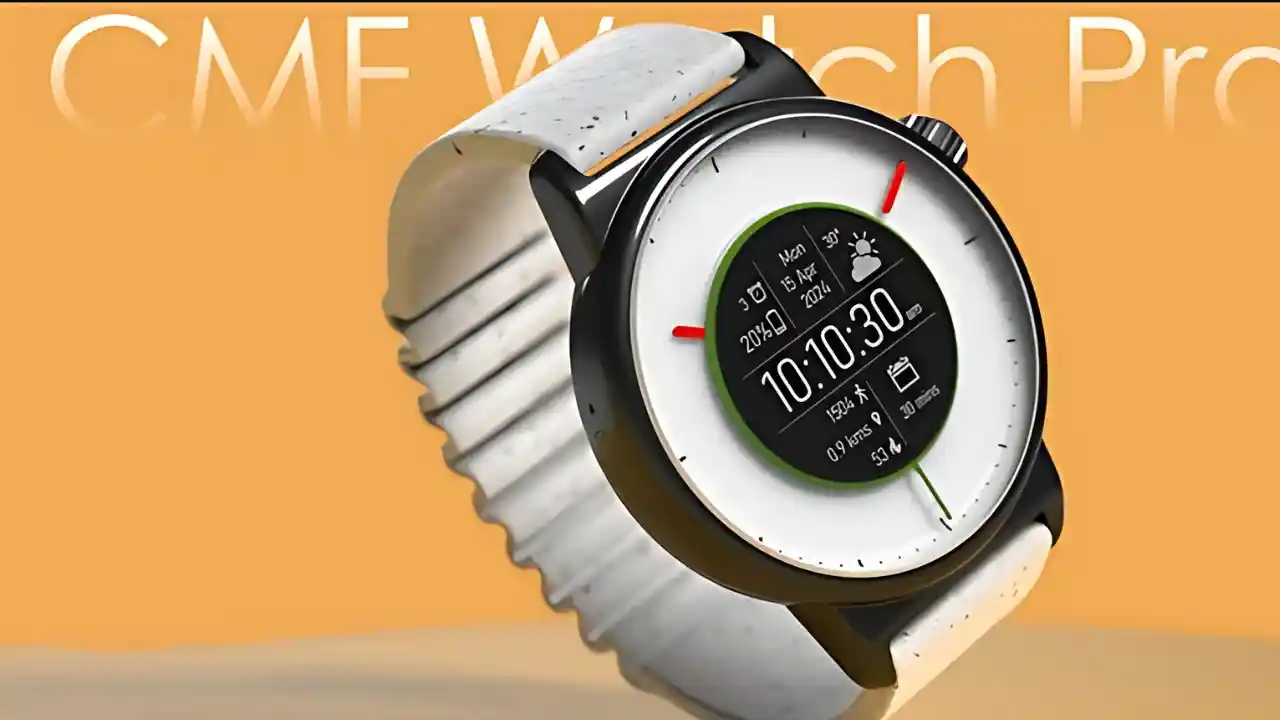Nothing has launched the CMF Watch 3 Pro, an ambitious upgrade to its wearable lineup. Featuring a larger display, access to ChatGPT, and sleek modular design, it aims to bring premium features to the mid-tier smartwatch market. Yet despite the hype, it sends mixed signals about its true value. Here’s what you need to know.
Sleeker Design, Bigger Display
The crowning feature of the Watch 3 Pro is its 1.7-inch AMOLED display, a noticeable upgrade from its predecessor. The taller screen offers crisp visuals, vibrant colors, and improved touch responsiveness. With a high refresh rate and excellent visibility under sunlight, the watch feels premium on the wrist.
The design remains true to Nothing’s aesthetic—bold lines, customizable straps, and a durable but lightweight aluminium frame. It’s fashionable, unisex, and sits comfortably on most wrist sizes.
ChatGPT Integration: Smart or Gimmicky?
This watch introduces on-device ChatGPT access, allowing voice and text interactions without needing a phone. You can ask about the weather, get quick information, or generate text—all from your wrist.
But there are questions:
-
Speed and Connectivity: Queries rely on Bluetooth and phone tethering, which may cause lag compared to built-in assistants.
-
Usability: Limited display size means long responses are hard to navigate. This feature seems more like a novelty than a daily necessity.
Despite these limitations, the ChatGPT feature offers a sneak peek at how AI can be integrated into wearable tech—if you can overlook the occasional stumbling blocks.
Fitness and Health Features
The Watch 3 Pro retains comprehensive health monitoring tools:
-
Heart rate and SpO2 tracking
-
24/7 sleep and stress monitoring
-
Standard fitness modes, including walking, cycling, and yoga
-
Menstrual cycle tracking and guided breathing exercises
Accuracy has improved slightly over previous models, though it still trails industry leaders in medical-grade precision. The absence of ECG or blood pressure monitoring remains a gap for users seeking advanced health insights.
Battery Life and Charging
Nothing advertises up to 14 days of battery life, and that seems valid under light-to-moderate use. With ChatGPT and frequent notifications, expect 7–8 days of real-world usage.
It also features magnetic fast charging, reaching a full charge in approximately 90 minutes. This gives it an edge over many wearable trackers—but heavy AI usage could reduce battery life faster than anticipated.
Software and Compatibility
Running on Nothing OS Watch, based on a third-party wearable platform, it offers a polished interface:
-
Customisable watch faces, including data-rich complications
-
Notifications, music controls, and event reminders
-
Find My Phone, alarm apps, countdown timer, and flashlight
-
Improved widget navigation, but still lacks seamless third-party app support seen in full-fledged wearable operating systems
Bluetooth compatibility works with both Android and iOS, but feature parity is better with Android. Some Apple-related features—like Siri or Apple Wallet integration—are missing, limiting functionality for iOS users.
Support and App Ecosystem
The watch is backed by a growing app library on the Linked App Store, offering weather apps, workout trackers, and basic third-party tools. While it’s a start, it lacks the extensive ecosystem that comes with more established platforms.
Firmware updates arrive monthly, addressing bugs and occasionally adding features. Nevertheless, it’s unclear how long platform support will last—no defined timeline has been shared yet.
Price Positioning: Value or Overreach?
Priced around ₹9,999 to ₹11,499 with early-bird offers, the Watch 3 Pro undercuts many premium smartwatches. Compared to budget and mid-range competitors, it packs notable features like a large AMOLED display and AI integration.
Yet you’ll find models offering deeper health tracking or more app variety. With strong alternatives from Xiaomi, Realme, and other big names, its mixed bag of features might not justify the price for some users.
Why It Matters
The Watch 3 Pro signals a bold shift in wearable tech:
-
On-device AI assistance—even experimental—sets a precedent
-
A move toward larger screens shifts the focus to smartwatch usability
-
It shows that mid-range wearables can aim beyond basic fitness tracking
If AI inclusion becomes more refined and core health features improve, Nothing could redefine smartwatch priorities. For now, it’s an intriguing step filled with potential and rough edges.
